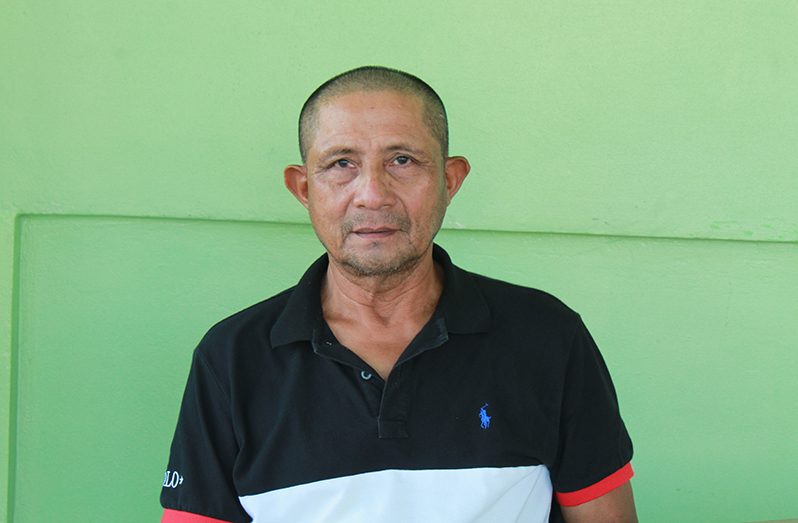– Toshao says developmental thrust would benefit hundreds of residents
By Vishani Ragobeer
WITH a keen focus on improving livelihoods and diversifying the economic activities in the indigenous communities of Orealla and Siparuta, in East Berbice, Corentyne, hundreds of residents have petitioned President Irfaan Ali for a secondary school and road from Orealla to Moleson Creek.
In a petition seen by the Guyana Chronicle, 419 signatures of residents from the two communities were affixed. Toshao of Orealla/Siparuta, Carl Peneux, in a recent interview, told this newspaper that the residents decided on penning the petition as it was seen as a more suitable and “professional” way of engaging the President.
“It is a petition for things that are developmental and crucial,” Peneux said, noting, “We’ve already seen how committed the new government is to development after being in office only for a short time.”
Currently, residents of the communities depend upon marine travel via the Corentyne River to travel to the coast. In order to get to Corriverton to transact business, market their products or even attend school, a fare of $1,000, one-way, is paid.
To transport goods, freight and handling fees are necessary, driving up the cost of goods sold and takes about six or seven hours. It is a treacherous journey, exacerbated when the weather is not favourable.
Since the COVID-19 pandemic placed many restrictions on travelling, the Toshao explained that permission to travel to Corriverton has to be sought from the Civil Defence Commission (CDC) at least 48 hours before.
“With COVID-19 now, it has become more important now that we have a road link from Orealla to Moleson Creek,” Peneux said.
“Generally, we feel that once we have this road link established, it will help us with our all-round business.”
Economic activity in these communities are largely constrained to logging, fishing and small amounts of farming. Few residents are able to work in the public service sector as health workers and teachers.
With this road, however, Peneux reasoned that there is wider scope for diversifying economic activity there; agriculture and logging between Moleson and Orealla can be increased, more products, such as craft items, can be produced and sold out of the community and there are even opportunities for the establishment of a gas station and other shops.
ECOTOURISM
Currently, there are approximately 1,200 residents in Orealla and about 500 residents in Siparuta. The indigenous communities are home to rich heritage and scenic spaces. The Toshao also indicated that the village council is seeking to leverage these features to promote ecotourism, in tandem with Guyana’s drive for this type of tourism.
Last year, Guyana became world renowned for eco and sustainable tourism, dubbed the #1 Ecotourism destination in the world.
“That road is going to boost our ecotourism drive and we hope that we can get tourists and visitors on a daily basis,” Peneux said. He also affirmed that the improving partnership between Guyana and Suriname could translate to more travel into the communities.
Importantly, too, the Orealla/Siparuta Village council is hoping to transform the community in such a way that offers an attractive recreation and relaxation spot to the scores of business persons coming to Guyana.
SECONDARY EDUCATION
Direct economic development is not the only focus of the residents, though. The petition also outlined the dire need for a secondary school. Aside from the handful of students who are awarded with scholarships from the government to attend schools on the coast, the majority of the students have to attend school in Corriverton and other parts of Berbice.
More than a decade ago, in 2006, the top of Orealla Primary school was converted into a Secondary department offering only four subjects to students. Due to inadequate staffing and facilities, however, Peneux emphasised that the programme remains stunted, with many school dropouts.
Peneux himself is no stranger to the challenges of secondary education. He related that in 1968, he was offered a place at the Berbice High School in New Amsterdam, but due to financial constraints, his father could not afford to send him.
He did not attend school for his entire first year. Fortunately, he was offered a scholarship to attend the North Georgetown Secondary school. All students, however, are not able to access these opportunities.
“There is a primary school in Orealla and quite a number of our students have been passing the examinations but they are not taking up the positions out there because they cannot afford it (and) it has hindered our development because it is only basic education they have,” Peneux lamented.
He explained that a secondary school must have basic facilities, including a library and an Information Technology (IT) lab, alongside trained staff.
He also highlighted that there is a concerning occurrence of teenage pregnancy and substance abuse in the community. This, he believes, can be curbed if learners can attend a secondary school in their community.
Currently, the Toshao said that there are only about nine students at that secondary department who are preparing to sit the Caribbean Secondary Education Certificate (CSEC) Examinations in 2021.
“These two projects that we are trying to get are for the future and the future generation…We want life to go easier for them,” Toshao said.
“I know that the country is facing a lot of issues with COVID, and even if we can’t get it done immediately, we are hoping that it will be done in the near future.”



.jpg)










